
DPC 2023-2025 / 2026 : ce que les kinés doivent vraiment retenir.
En 2025, beaucoup de kinés se posent deux questions simples : « Est-ce que j’ai bien rempli ma triennale 2023-2025 ? » « À quoi
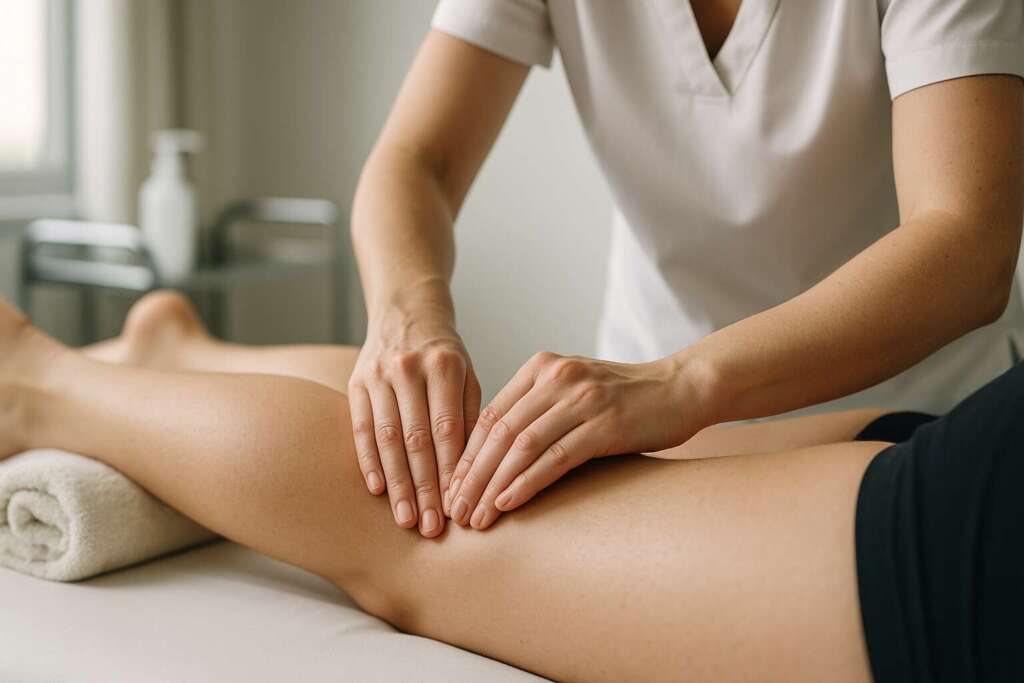
Article écrit par Thierry Blain, Fondateur et dirigeant de Kiné-Formations.
la lymphe n’est pas seulement un “second réseau veineux”. c’est un système de collecte, de filtration et de retour au sang des liquides interstitiels, des macromolécules (protéines, lipides), des cellules immunitaires et des déchets tissulaires. trois fonctions majeures sont établies :
équilibre hydrique (retour des fluides interstitiels),
absorption des graisses alimentaires via les chylifères intestinaux,
patrouille immunitaire et présentation antigénique. PubMedCNIB
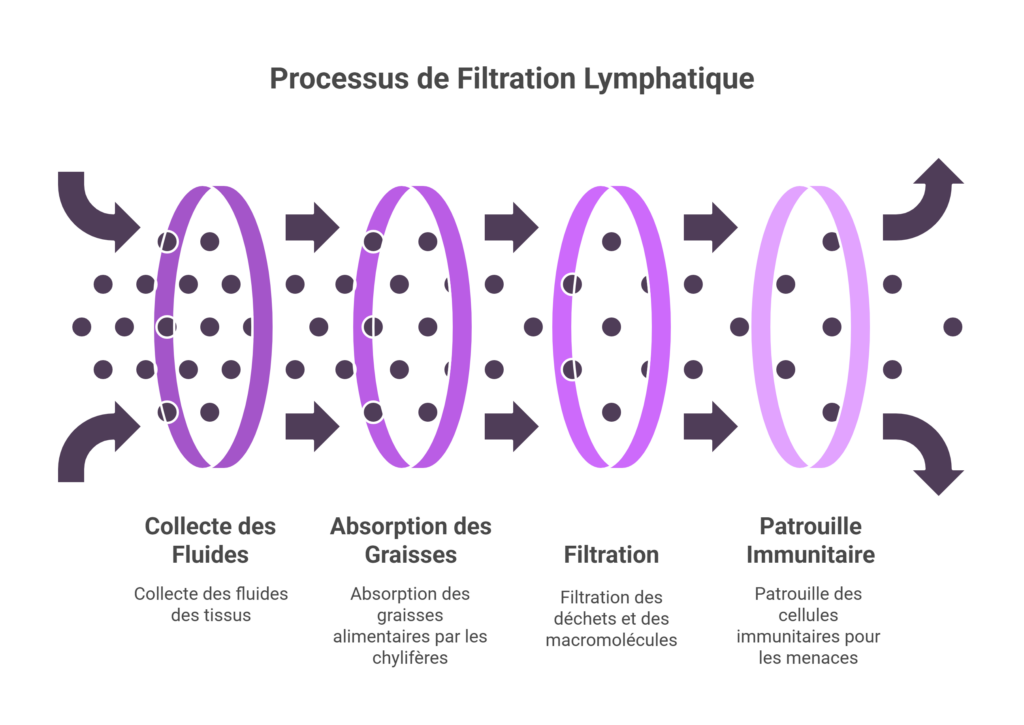
désengorgement tissulaire : les capillaires lymphatiques initiaux “aspirent” l’excès de liquide et les protéines qui ne peuvent pas revenir par les veines. des collecteurs contractiles (lymphangions) dotés de valves propulsent la lymphe vers l’amont. la pompe est sensible aux contraintes mécaniques locales (étirement, cisaillement). NaturePubMed
filtration immunitaire : les ganglions sont de véritables stations-filtre où macrophages, cellules dendritiques et lymphocytes détectent et neutralisent les pathogènes. CNIB
métabolisme lipidique : les lactéales de l’intestin grêle captent les chylomicrons et les acheminent vers la citerne du chyle puis le conduit thoracique. PubMed
réparation et inflammation : la dynamique lymphatique influence la clairance des médiateurs inflammatoires et la résolution tissulaire ; des altérations de pompe/valves s’associent à infection, fibrose et lymphœdème. PMCPubMed
Collecte périphérique : capillaires initiaux → pré-collecteurs → collecteurs segmentés en lymphangions (unités contractiles valvulées). PMC+1
Niveaux ganglionnaires : afférents → ganglion (cortex/paracortex/médullaire) → efférents. CNIB
Troncs et confluence :
conduit thoracique : draine ≈ 75 % du corps (membres inf., abdomen, hémicorps gauche de la tête/cou et du thorax) depuis la citerne du chyle (variable anatomique fréquente) ; se jette classiquement à l’angle veineux jugulo-subclavier gauche. CNIBMDPI
conduit lymphatique droit : draine le quadrant supérieur droit (tête/cou droit, hémithorax droit, membre sup. droit) vers l’angle veineux droit. CNIBHogrefe EcontentAJR Online
Propulsion : contraction autonome des lymphangions + forces extrinsèques (pompe musculaire, respiration, pression cutanée/aponévrotique). les forces mécaniques modulent directement l’activité des cellules endothéliales lymphatiques. NaturePubMed
douleur et fonction : décharger l’interstitium améliore la mobilité tissulaire et peut réduire l’allodynie liée à l’œdème. en pathologies musculo-squelettiques, la dysrégulation lymphatique et immunitaire est désormais reconnue comme co-facteur. PMC
cicatrices et post-opératoire : optimiser la clairance des protéines et cytokines peut accompagner la résolution œdémateuse et la trophicité tissulaire. (données mécanistiques et cliniques en progression). PMC
sein et oncologie : en lymphœdème post-cancer du sein, les synthèses récentes nuancent l’ampleur de l’effet du DLM isolé, mais l’intègrent utilement au traitement décongestif complexe (compression, exercice, soins cutanés), surtout en phase adaptée au patient. PubMedPMC+1
œdèmes mous prenant le godet, lourdeur segmentaire, tension cutanée, perte de plis cutanés.
antécédents de chirurgie/curage, radiothérapie, infection cutanée, immobilisation prolongée.
plaintes fonctionnelles « floues » majorées en fin de journée (sensation de gonflement, limitation de fin d’amplitude).
attention aux contre-indications : insuffisance cardiaque décompensée, infection aiguë non traitée, thrombose veineuse aiguë, cancer évolutif non stabilisé, etc. (à dépister systématiquement avant toute manœuvre). PMC
inspection : symétrie, contours, empreinte du vêtement, aspect cutané (peau d’orange, vergetures de tension), cicatrices.
palpation tissulaire : mobilité peau-fascie, glissement, turgescence, douleur provoquée. comparer en proximal/distal et bilatéral.
tests fonctionnels simples : périmétries ou mesures de circonférence segmentaire, score de lourdeur/douleur (EVA), photographie standardisée.
repérage des axes de drainage : chemins préférentiels vers les territoires ganglionnaires indemnes, identification des “barrages” (cicatrice, bride, zone inflammatoire).
plan de soins : éducation cutanée, auto-gestes, respiration à dominante abdominale (effet pompe), compression adaptée, & travail progressif du réseau (proximal → distal → proximal).
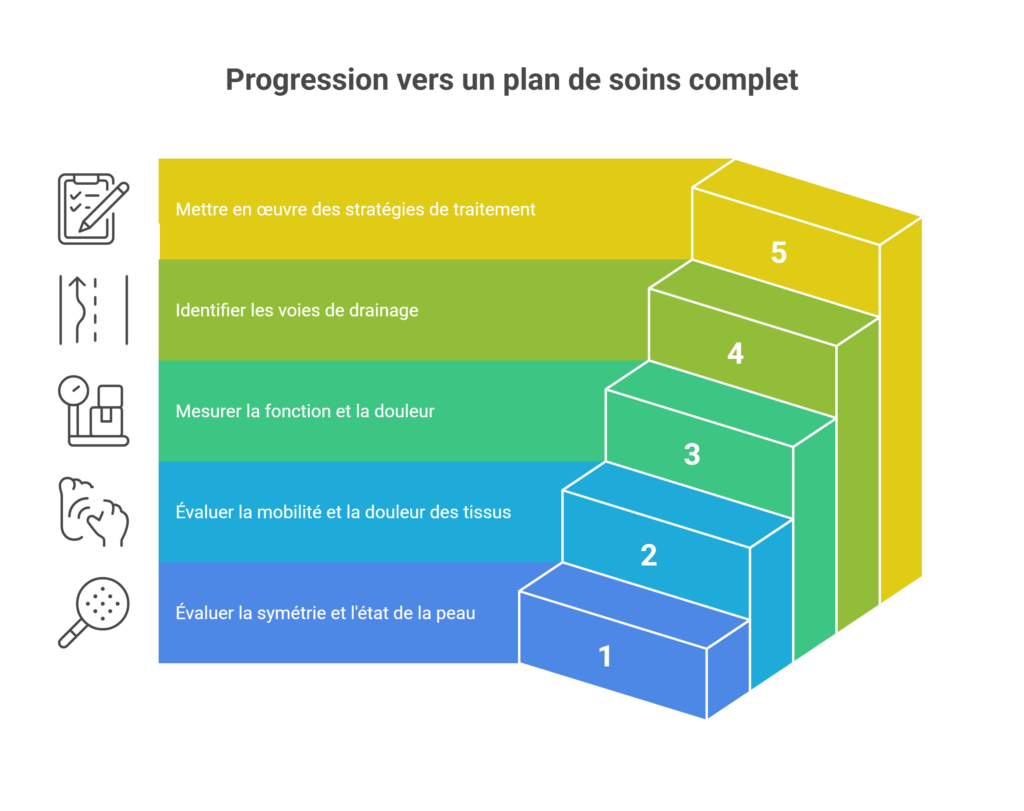
les données probantes les plus robustes montrent que le drainage lymphatique manuel est plus pertinent intégré : évaluation + compression + exercice + soins cutanés. il semble utile dans certains tableaux (lymphœdème lié au cancer du sein, œdèmes post-traumatiques) alors que son effet isolé varie selon les études. le message pour nous, kinés : raisonner, doser, objectiver. PubMedPMC+1
diminution progressive de volume, meilleure définition des reliefs, cicatrice plus souple.
explications simples, rythme respiratoire guidé, feedbacks courts (« ici ça dégonfle », « là c’est encore tendu »).
allègement segmentaire, chaleur douce, retour de l’aisance au mouvement.
Parce que comprendre les trajets réels (droits et collatéraux), tester la pompe lymphangionnaire via des techniques de pression/relâchement dosées, intégrer la compression et l’exercice et documenter l’effet (périmétries, photo, EVA) demande plus qu’un “savoir-faire manuel” : cela exige une méthode, des repères anatomiques fiables et une mise à jour des preuves. les avancées récentes en physiologie et en imagerie lymphatique confirment l’intérêt d’une approche précise et progressive. PMCNature
le système lymphatique est un organe d’élimination majeur : fluides, protéines, lipides, signaux immunitaires. PubMed
la voie principale est le conduit thoracique (→ angle veineux gauche) ; le conduit droit draine le quadrant sup. droit. pensez “proximal d’abord”. CNIB
la pompe dépend à la fois des lymphangions et des forces extrinsèques ; nos techniques mécaniques peuvent moduler ce système. PubMedNature
le DLM a sa place dans un protocole combiné et raisonné, avec des effets variables selon les contextes. objectiver, adapter, réévaluer. PubMedPMC
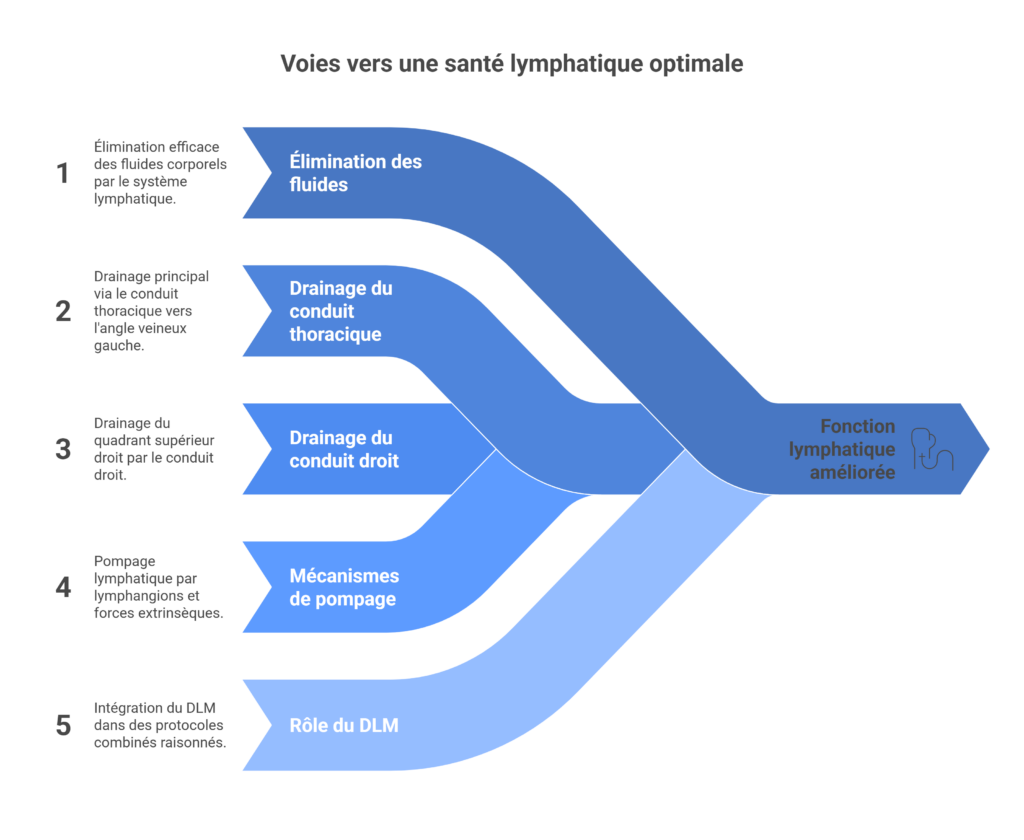
Technique de massage destinée à stimuler la circulation de la lymphe et à détoxiquer l’organisme. Travail de toutes les parties du corps et de la tête.
Formation drainage lymphatique manuelLire la suite »
Système et drainage lymphatique Le système lymphatique reste parfois mystérieux car on en parle moins que le système artério-veineux. Constitué de vaisseaux, de ganglions et d’organes, il joue un rôle capital dans la répartition des liquides du corps. Sa fonction immunitaire en fait un réseau de défense du corps humain sans lequel les bactéries et
10 questions que vous vous posez sur la lympheLire la suite »
Entretien avec Maryvonne Chardon sur la génèse de sa technique autour du DLM. Maryvonne Chardon est une Masseur-kinésithérapeute experte en pathologies lymphatiques et en compression médicale, Présidente de l’Association Mieux Vivre le Lymphœdème (AVML). • Lors de ses études, elle fut première de sa promotion sur 3 ans d’études. Elle apprendra la pathologie de 1971
LA NAISSANCE D’UNE TECHNIQUE, Entretien avec MARYVONNE CHARDON.Lire la suite »
Conseils et astuces, Formations, Portrait, Vidéo & podcast
physiology & “big picture” : StatPearls 2023-2024. PubMedCNIB
anatomie des conduits (thoracique, droit) : StatPearls 2023 ; revues anatomiques 2024 ; AJR 2021. CNIBMDPIAJR OnlineHogrefe Econtent
mécanique et biophysique des lymphangions : Nature Rev. (immunologie/biomécanique) 2023 ; revues 2025. NaturePubMed
DLM et prise en charge du lymphœdème : revues systématiques/état de l’art 2021-2025. PubMedPMC+1
PubMed
CNIB
Nature
PubMed
CNIB
CNIB
MDPI
PubMed
Plus
clevelandclinic.org
biomedcentral.com
biomedcentral.com
nature.com
mdpi.com
sciencedirect.com
sciencedirect.com

En 2025, beaucoup de kinés se posent deux questions simples : « Est-ce que j’ai bien rempli ma triennale 2023-2025 ? » « À quoi

À partir de 2026, les masseurs-kinésithérapeutes libéraux vont bénéficier d’une meilleure prise en charge financière de leurs formations par le FIF PL. Après une période

De plus en plus de patientes arrivent au cabinet avec un projet de grossesse, un parcours de PMA ou une endométriose qui complique tout… Dans

Le webinaire « Les 1000 premiers jours : rôle du kinésithérapeute », diffusé le 25 novembre 2025 de 20h à 21h et animé par Elsa

Le webinaire “I.A. & Kinésithérapie”, diffusé le 17 novembre 2025 à 12h15, est désormais disponible en rediffusion sur cette page.Vous pouvez ainsi (re)voir, à votre
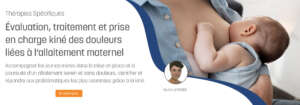
Entretien avec Sarah Lipskier, kinésithérapeute spécialisée en périnatalité, pédiatrie et allaitement maternel Dans cette interview menée par Benoît Caron, Sarah Lipskier partage sa vision du